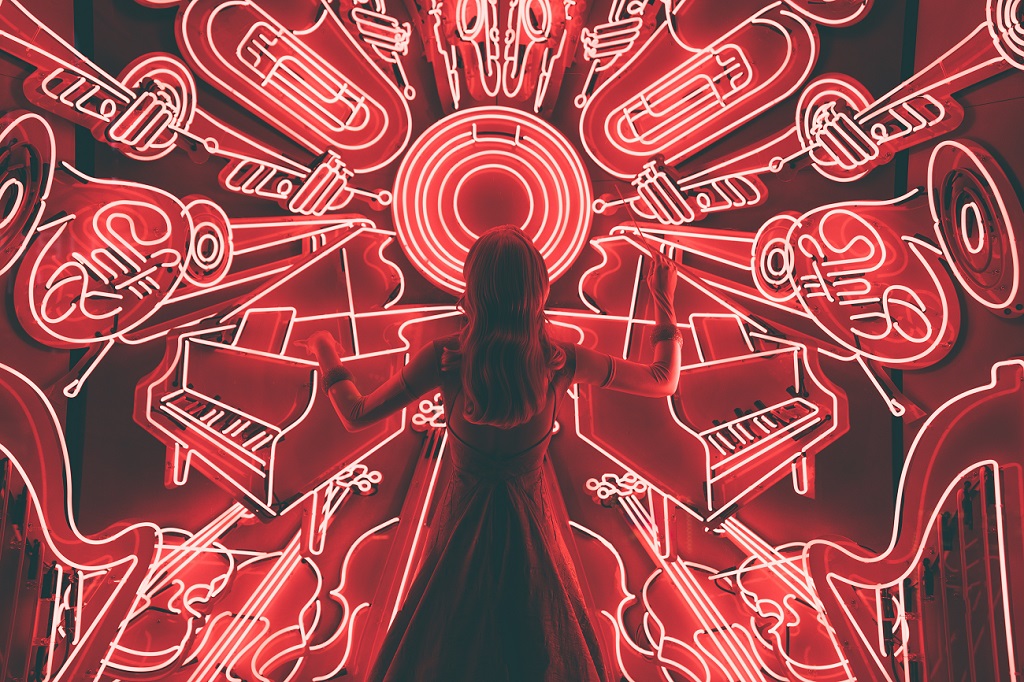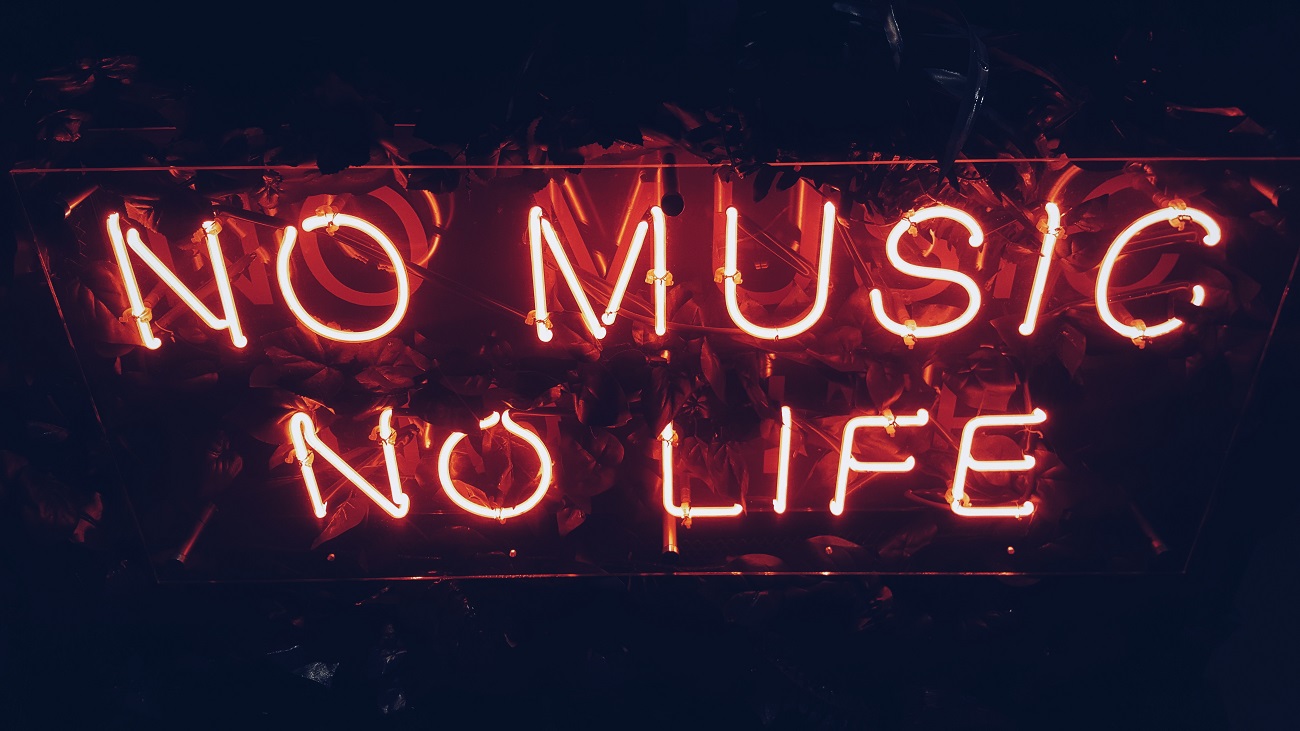From critics to algorithms: how democracy and technocracy came to the music industry
In previous materials ( 1 , 2 ), we talked about systems that influenced the public taste in music until the end of the 20th century. In this, we will talk about how they began to collapse. Photo Spencer Imbrock / Unsplash

Technology has created the phenomenon of a music album. They put him at risk. The first blow was dealt by television. Until the 1970s, television broadcast did not differ in variety; almost all television channels in Western countries were aimed at one category of people - office workers. But already in the late 70s, cable television appeared, and the owners of new cable channels became bolder in their experiments with broadcast formats.
The main of these decisions was the launch of MTV on August 1, 1981. A youth-oriented channel aired on the funeral march "Video Killed The Radio Star".
But the funeral had to be postponed. In the early years of broadcasting, the company lost $ 50 million. Music videos at that time were not popular, were used to promote album sales and were not perceived as self-contained works of art. Therefore, at first the broadcast of the television company consisted of no more than 250 video clips. But by the mid-80s, the channel "went into plus" - and became an international phenomenon.
Thanks to MTV, music content began to compete with entertainment programs on other television channels. In order to survive in the world of sitcoms and sports, the music had to change. The role of music videos as advertisements for records has faded into the background - now the clips themselves have tried to make spectacular, attractive, viral. Artists spent millions on the set - many of the "classic clips" from the 80s and 90s are still on the list of the most expensive . Extravagant videos have led to the massive popularity of artists such as Madonna and Michael Jackson.
The digital revolution has further spurred this competition. In the digital world, there is only one currency - human attention. Academic music, pop clips, news videos, articles, photos, all that we call "content", is fighting for the right to be on the screen of a smartphone or computer.

Photo by Simon Noh / Unsplash
Musical criticism of the "album age" has inherited a lot from the academic tradition - including the tendency to idealize the abstractness of musical works. In a market where TV shows compete with music, this approach is hard to maintain.
Moreover, even in academic art criticism, the critical theory of media plays an increasingly important role, which approaches art from a materialistic perspective and emphasizes its social context. Therefore, modern music criticism is placing an increasing emphasis on what is happening "around the music", and some consider the genre of landscape review to be completely dead.
But the main "killers of critics" were the voices of ordinary people. The Internet has become a truly democratic media platform where everyone can express their opinion. If a certain position finds resonance - it becomes more noticeable. The collective opinion of the audience, whatever it may be, became more audible than the opinion of experts.
The value of expert opinions as such has devalued significantly over the past 10 years. Digital sites with minimal censorship equalized all positions. The differences between samizdat and the peer-reviewed article have practically disappeared, and popularity has become a more important measure of the success of content than its quality in the eyes of experts.

Photo Marc-Olivier Paquin / Unsplash
The final blow to classical music criticism came from streaming platforms. If earlier reviews served as a guide to buying an album, now physical releases buy units. With the advent of Spotify and Apple Music, anyone can listen to the work that has just been released and draw their own conclusions about its quality.
Recommended algorithms play an important role in the formation of musical culture. People dissatisfied with "taste", trust them more than critics. One of the first such a musical algorithm was developed by the social network and the online radio platform Last.fm.
Their algorithm compared listeners' preferences , analyzed genre tags that users set, and created a rating on this basis. Pandora used algorithms that compare the songs themselves, not their listeners. Classifiers were assigned to each track, and on the basis of these data the "similarity" of musical compositions was determined.
Spotify builds a profile of user preferences, taking into accountuser actions and behavior - songs that people skip; playlists that they create. Apple Music works similarly.
The process of searching for music on streaming platforms is “tailored” to an individual taste, which turns this environment into a kind of echo camera . The user practically does not make contact with music that does not correspond to the genres and directions that are familiar to him. The chance to make an accidental opening in such conditions is less than when choosing a disc or record in a store.

Photo Nadine Shaabana / Unsplash
On multimedia platforms, the situation is a little different. As in the case of streaming services, attracting attention to your song on the same YouTube is not a trivial task: the recommender algorithm takes into account the video being watched, CTR (an indicator that is often increased with the help of “clickbait” - sensational headlines and intriguing previews), viewing by users of other videos by the same author, repeat views and other statistics.
YouTube’s business motivation is clear - their main goal is to keep the audience on their platform. The more videos people watch, the more ads they can show, and the easier it is to offer them other videos that are guaranteed to be watched to the end.
All this greatly complicates the inclusion of new music content in the “recommended” category. Even if a clip will gain views without a “clickbait” preview and sensational title, it will still have to compete with a wide variety of non-musical content, the creators of which do everything possible to increase the popularity of their channels.
Platforms are trying to reduce the effect of the “echo-camera” by attracting “live” curators to the process. This approach uses the vast majority of streaming services. Former journalists now create author playlists and collections. But this work cannot be compared with musical criticism: curated playlists and balanced, substantiated critical essays are still not the same thing.
The main task of musical criticism is to separate the eternal from the temporal. And, in a way, playlists have the same role. The fact that a particular song is included in the playlist tells the listener that it deserves his attention. But if a good review can make the reader take a fresh look at the composition or album, reveal previously unknown facts about the music or artist, then playlists are deprived of this additional information load. In the end, the listener, not understanding why he should be interested in the composition, presses the “skip” button and returns to the usual tracks.
Whether curating will save the digital distribution of music is not known. Without musical critics in their traditional sense, the “work” to find a new one and develop a musical taste rests entirely with the listener - you have to independently search for new genres and directions, find information about the artists and understand “what the author wanted to say.” Fortunately, now all this information is much more accessible than in the heyday of musical criticism.
Our additional reading materials:
 We retired - we discuss once-popular audio gadgets that are already “outdated”
We retired - we discuss once-popular audio gadgets that are already “outdated”
 The history of audio technologies: synthesizers and samplers
The history of audio technologies: synthesizers and samplers
 What are the features and tasks of the sound accompaniment of games
What are the features and tasks of the sound accompaniment of games
 Zoo professions related to the audio industry
Zoo professions related to the audio industry
 What is happening in the audio podcast market Ultimate audio
What is happening in the audio podcast market Ultimate audio
 focus - how metamaterials will help
focus - how metamaterials will help
 Russian scientists recorded the music of space pulsars
Russian scientists recorded the music of space pulsars
 Pay what you want: how this model showed itself in music
Pay what you want: how this model showed itself in music
 From critics to algorithms: labels, corporations and musical I'm 20th century culture
From critics to algorithms: labels, corporations and musical I'm 20th century culture
 From critics to algorithms: the dying voice of elites in the world of music
From critics to algorithms: the dying voice of elites in the world of music

Transformation of criticism into the age of multimedia
Technology has created the phenomenon of a music album. They put him at risk. The first blow was dealt by television. Until the 1970s, television broadcast did not differ in variety; almost all television channels in Western countries were aimed at one category of people - office workers. But already in the late 70s, cable television appeared, and the owners of new cable channels became bolder in their experiments with broadcast formats.
The main of these decisions was the launch of MTV on August 1, 1981. A youth-oriented channel aired on the funeral march "Video Killed The Radio Star".
But the funeral had to be postponed. In the early years of broadcasting, the company lost $ 50 million. Music videos at that time were not popular, were used to promote album sales and were not perceived as self-contained works of art. Therefore, at first the broadcast of the television company consisted of no more than 250 video clips. But by the mid-80s, the channel "went into plus" - and became an international phenomenon.
Thanks to MTV, music content began to compete with entertainment programs on other television channels. In order to survive in the world of sitcoms and sports, the music had to change. The role of music videos as advertisements for records has faded into the background - now the clips themselves have tried to make spectacular, attractive, viral. Artists spent millions on the set - many of the "classic clips" from the 80s and 90s are still on the list of the most expensive . Extravagant videos have led to the massive popularity of artists such as Madonna and Michael Jackson.
The digital revolution has further spurred this competition. In the digital world, there is only one currency - human attention. Academic music, pop clips, news videos, articles, photos, all that we call "content", is fighting for the right to be on the screen of a smartphone or computer.
The entertaining aspect of music and its surface appeal have become the main indicator of mass success. The importance of packaging a creative product, an artist’s brand, and the context in which it can be presented has increased dramatically.

Photo by Simon Noh / Unsplash
Musical criticism of the "album age" has inherited a lot from the academic tradition - including the tendency to idealize the abstractness of musical works. In a market where TV shows compete with music, this approach is hard to maintain.
Moreover, even in academic art criticism, the critical theory of media plays an increasingly important role, which approaches art from a materialistic perspective and emphasizes its social context. Therefore, modern music criticism is placing an increasing emphasis on what is happening "around the music", and some consider the genre of landscape review to be completely dead.
The phenomenon of mass popularity
But the main "killers of critics" were the voices of ordinary people. The Internet has become a truly democratic media platform where everyone can express their opinion. If a certain position finds resonance - it becomes more noticeable. The collective opinion of the audience, whatever it may be, became more audible than the opinion of experts.
The value of expert opinions as such has devalued significantly over the past 10 years. Digital sites with minimal censorship equalized all positions. The differences between samizdat and the peer-reviewed article have practically disappeared, and popularity has become a more important measure of the success of content than its quality in the eyes of experts.

Photo Marc-Olivier Paquin / Unsplash
The final blow to classical music criticism came from streaming platforms. If earlier reviews served as a guide to buying an album, now physical releases buy units. With the advent of Spotify and Apple Music, anyone can listen to the work that has just been released and draw their own conclusions about its quality.
Algorithms and Metrics
Recommended algorithms play an important role in the formation of musical culture. People dissatisfied with "taste", trust them more than critics. One of the first such a musical algorithm was developed by the social network and the online radio platform Last.fm.
Their algorithm compared listeners' preferences , analyzed genre tags that users set, and created a rating on this basis. Pandora used algorithms that compare the songs themselves, not their listeners. Classifiers were assigned to each track, and on the basis of these data the "similarity" of musical compositions was determined.
Spotify builds a profile of user preferences, taking into accountuser actions and behavior - songs that people skip; playlists that they create. Apple Music works similarly.
The process of searching for music on streaming platforms is “tailored” to an individual taste, which turns this environment into a kind of echo camera . The user practically does not make contact with music that does not correspond to the genres and directions that are familiar to him. The chance to make an accidental opening in such conditions is less than when choosing a disc or record in a store.

Photo Nadine Shaabana / Unsplash
On multimedia platforms, the situation is a little different. As in the case of streaming services, attracting attention to your song on the same YouTube is not a trivial task: the recommender algorithm takes into account the video being watched, CTR (an indicator that is often increased with the help of “clickbait” - sensational headlines and intriguing previews), viewing by users of other videos by the same author, repeat views and other statistics.
YouTube’s business motivation is clear - their main goal is to keep the audience on their platform. The more videos people watch, the more ads they can show, and the easier it is to offer them other videos that are guaranteed to be watched to the end.
All this greatly complicates the inclusion of new music content in the “recommended” category. Even if a clip will gain views without a “clickbait” preview and sensational title, it will still have to compete with a wide variety of non-musical content, the creators of which do everything possible to increase the popularity of their channels.
Will the curators save the situation
Platforms are trying to reduce the effect of the “echo-camera” by attracting “live” curators to the process. This approach uses the vast majority of streaming services. Former journalists now create author playlists and collections. But this work cannot be compared with musical criticism: curated playlists and balanced, substantiated critical essays are still not the same thing.
The main task of musical criticism is to separate the eternal from the temporal. And, in a way, playlists have the same role. The fact that a particular song is included in the playlist tells the listener that it deserves his attention. But if a good review can make the reader take a fresh look at the composition or album, reveal previously unknown facts about the music or artist, then playlists are deprived of this additional information load. In the end, the listener, not understanding why he should be interested in the composition, presses the “skip” button and returns to the usual tracks.
Whether curating will save the digital distribution of music is not known. Without musical critics in their traditional sense, the “work” to find a new one and develop a musical taste rests entirely with the listener - you have to independently search for new genres and directions, find information about the artists and understand “what the author wanted to say.” Fortunately, now all this information is much more accessible than in the heyday of musical criticism.
Our additional reading materials:
 We retired - we discuss once-popular audio gadgets that are already “outdated”
We retired - we discuss once-popular audio gadgets that are already “outdated”  The history of audio technologies: synthesizers and samplers
The history of audio technologies: synthesizers and samplers  What are the features and tasks of the sound accompaniment of games
What are the features and tasks of the sound accompaniment of games  Zoo professions related to the audio industry
Zoo professions related to the audio industry  What is happening in the audio podcast market Ultimate audio
What is happening in the audio podcast market Ultimate audio  focus - how metamaterials will help
focus - how metamaterials will help  Russian scientists recorded the music of space pulsars
Russian scientists recorded the music of space pulsars  Pay what you want: how this model showed itself in music
Pay what you want: how this model showed itself in music  From critics to algorithms: labels, corporations and musical I'm 20th century culture
From critics to algorithms: labels, corporations and musical I'm 20th century culture  From critics to algorithms: the dying voice of elites in the world of music
From critics to algorithms: the dying voice of elites in the world of music